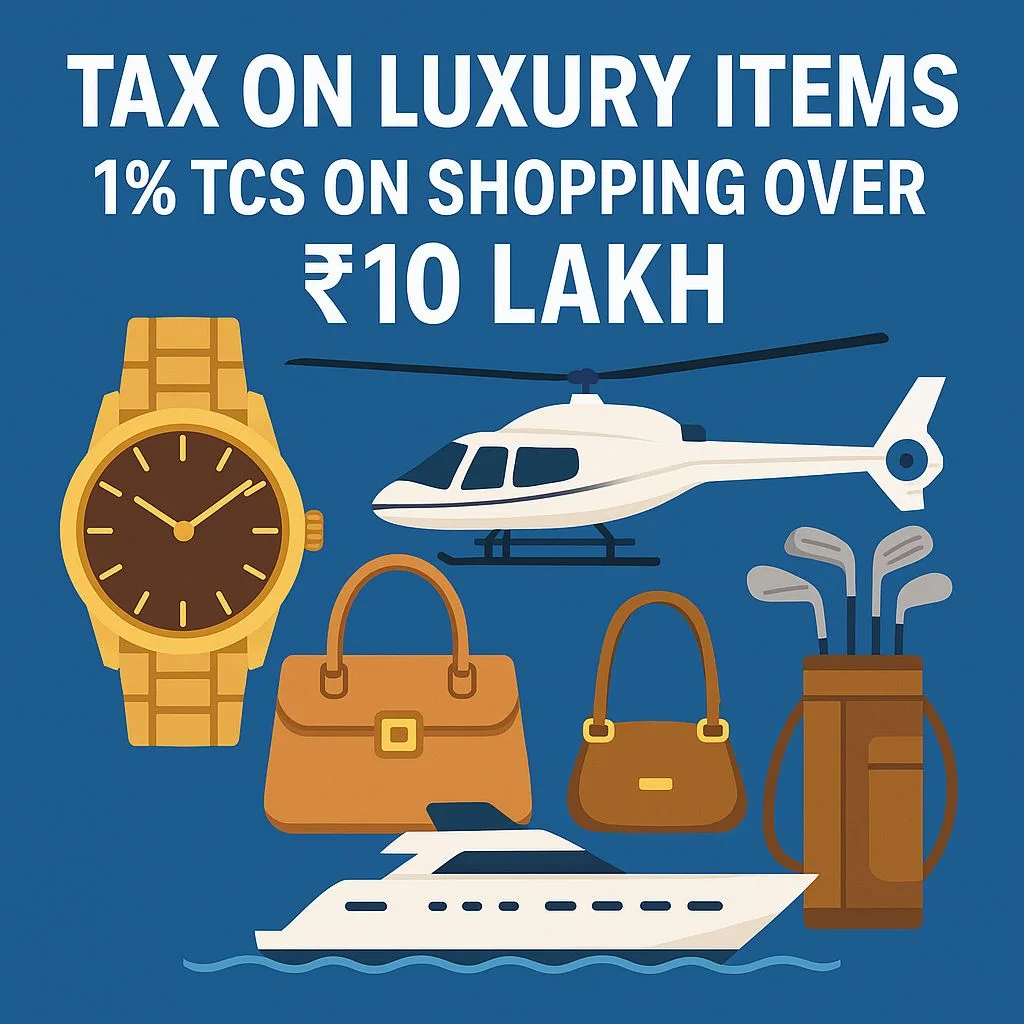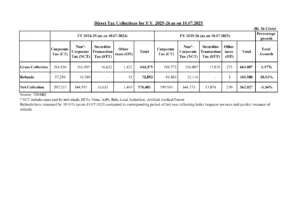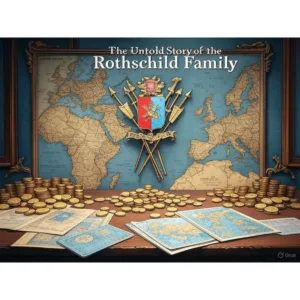Government Tightens Tax Rules on High-End Purchases
In a move aimed at expanding the tax net and tracking high-value consumer spending, the Indian government has introduced a new rule that will impose a 1% Tax Collected at Source (TCS) on luxury purchases exceeding Rs 10 lakh. The decision comes under Section 206C (1F) of the Income Tax Act and is effective immediately.
This move was first proposed during the July 2024 Union Budget, and now, the government has officially released a detailed list of items that qualify as luxury goods for taxation purposes.
What Does This Mean for Buyers and Sellers?
From now on, any purchase of specified luxury goods worth more than Rs 10 lakh in a financial year will attract a 1% TCS. Importantly, this tax is not to be paid by the buyer directly—it will be collected at the time of sale by the seller and reported to the Income Tax Department.
This means if you’re buying an ultra-luxury watch, a designer handbag, or even a helicopter, the seller will collect 1% TCS from you at the time of billing and deposit it with the government on your behalf.
What Falls Under ‘Luxury Items’?
The list of items now officially defined as ‘luxury goods’ includes
• Expensive wristwatches
• Artworks and Antiques
• Designer handbags
• Luxury yachts
• High-end sportswear
• Golf kits and skiing gear
• Home theatre systems
• Pedigree horses
• Helicopters
These items are typically associated with affluent individuals or High Net-worth Individuals (HNIs). By taxing these, the government aims to monitor lavish expenses that often escape the formal tax radar.
Purpose Behind the Rule: Why 1% TCS?
The government has introduced this rule to:
• Track high-value transactions
• Discourage unaccounted luxury spending
• Ensure better tax compliance
• Widen the taxpayer base
When a luxury item is purchased, the 1% TCS collected is reflected in the buyer’s Form 26AS (a part of the income tax filing record). This helps the tax department identify high-spending individuals who may not be reporting their income accurately.
Applicability and Exemptions
This rule only applies to retail shopping transactions where the total value of listed luxury items crosses Rs 10 lakh in a financial year. The TCS will not apply to purchases below this threshold.
Also, this does not impact daily-use goods or items commonly bought by middle-income households.
Update on TCS Rules for Overseas Transactions
This new luxury TCS rule comes alongside changes made earlier to the Liberalised Remittance Scheme (LRS). Previously, a 20% TCS was applicable for foreign remittances above Rs 7 lakh, except for education and medical expenses.
Now, the TCS will apply only when overseas remittance exceeds Rs 10 lakh under most circumstances, thus giving slight relief to frequent travelers and overseas spenders.
Conclusion: A Move Towards Greater Transparency
With this notification, the government has clearly defined what constitutes luxury spending and who must comply with the 1% TCS rule. This helps plug loopholes in the tax system, ensures transparency in high-end spending, and reduces the use of black money in luxury markets.
Buyers should keep in mind that TCS is not an extra tax burden—it can be claimed as credit while filing income tax returns. But it does bring accountability.
As luxury markets in India continue to expand, this rule ensures that the glitz is matched by tax discipline.
Bringing you the latest updates on finance, economies, stocks, bonds, and more. Stay informed with timely insights.














Be First to Comment